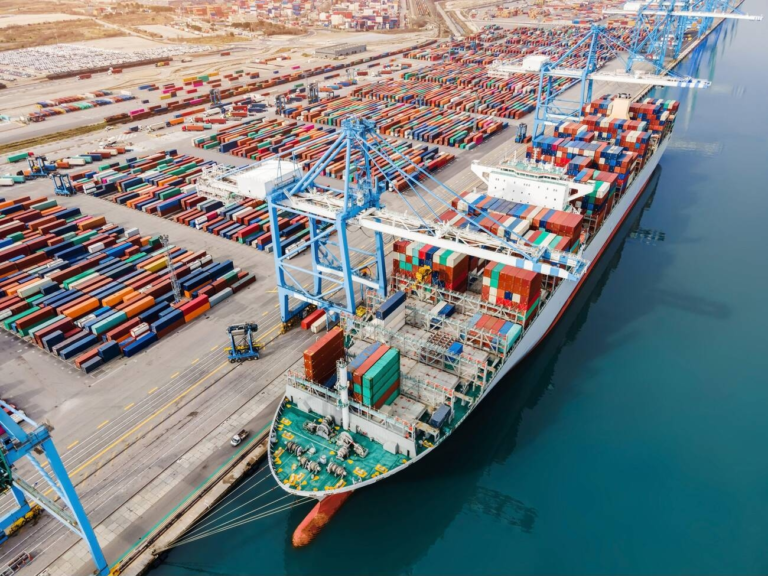Supply Chain Analysis: Definition, Benefits, and More
Supply chain analysis helps businesses improve efficiency, reduce costs, and stay competitive. It involves examining every step of the supply chain to identify and resolve inefficiencies. By leveraging data-driven strategies, businesses can make informed decisions and optimize operations.
What is Supply Chain Analysis?
Supply chain analysis examines every step in the supply chain process, from sourcing raw materials to delivering finished goods, with the goal of improving efficiency and reducing costs. This evaluation focuses on key areas like procurement, inventory management, production, and logistics. By identifying inefficiencies and bottlenecks, businesses can develop actionable strategies to optimize operations.
Thorough analysis ensures processes are streamlined, minimizing delays and improving alignment across the supply chain. Understanding practices like green supply chain management can help integrate environmental and sustainability considerations into these processes.
Why is Supply Chain Analysis Important for Your Business?
Supply chain analysis is a cornerstone of operational excellence and a key driver of sustained competitive advantage. By systematically identifying inefficiencies and bottlenecks, it enables businesses to devise actionable strategies that enhance overall efficiency and resource management.
- Adaptability to Market Shifts: By pinpointing weak links within the supply chain, businesses can respond proactively to fluctuating market demands, mitigating potential disruptions.
- Elevated Customer Satisfaction: A well-optimized supply chain ensures on-time deliveries and minimizes errors, fostering trust and loyalty among customers.
- Cost Optimization: Streamlined workflows reduce wastage and improve productivity, resulting in significant cost savings through strategic allocation of resources.
Incorporating advanced techniques, such as improving supply chain visibility, ensures transparency across operations, enabling informed decision-making and seamless collaboration among stakeholders.
Types of Supply Chain Analysis
There are four primary types of supply chain analysis that play distinct roles in optimizing operations and decision-making:
- Descriptive Analytics: Focuses on understanding past events by analyzing historical data. It helps businesses identify recurring trends, bottlenecks, and inefficiencies, such as delays or inventory shortages, to understand where improvements are needed.
- Predictive Analytics: Uses both historical and real-time data to forecast future events and potential risks. By anticipating changes in demand or identifying supplier reliability issues, businesses can proactively prepare for disruptions, improving operational stability. The use of predictive analytics in supply chain management helps organizations stay ahead of challenges.
- Prescriptive Analytics: Provides actionable recommendations based on data analysis and forecasts. It suggests optimal strategies, such as resource allocation, optimized shipping routes, and efficient production schedules, for the best outcomes.
- Cognitive Analytics: Harnesses AI and machine learning to process large volumes of data and make real-time decisions. This advanced approach allows businesses to adapt dynamically to changing circumstances, as highlighted in the scope of AI in supply chain management.
Benefits of Supply Chain Analysis
Supply chain analysis provides a range of benefits that enhance operational performance and strategic decision-making:
- Improved Efficiency: Identifies inefficiencies and streamlines workflows, ensuring optimal resource utilization. Exploring supply chain process optimization can further enhance these efforts.
- Cost Savings: By analyzing every component of the supply chain, businesses can uncover opportunities to minimize production and logistics expenses. Strategies for reducing costs are detailed in effective supply chain cost reduction methods.
- Better Decision-Making: Comprehensive data analysis provides actionable insights for resource management, inventory control, and process optimization.
- Enhanced Agility: A clear view of supply chain vulnerabilities allows businesses to adapt quickly to disruptions. Insights on maintaining continuity during disruptions can be found in strategies to navigate supply chain challenges.
- Risk Management: Identifying vulnerabilities and developing contingency plans strengthen overall risk management. The importance of managing risks is further discussed in supply chain risk management.
- Customer Satisfaction: Reliable supply chain practices ensure timely deliveries and consistent service, enhancing customer trust. The role of tracking in improving logistics efficiency is explored in supply chain tracking benefits.
Challenges of Supply Chain Analysis
While supply chain analysis offers immense value, it’s not without its challenges:
- Data Accuracy: Incomplete or outdated information can misguide decisions. Rigorous data validation protocols ensure reliability.
- Integration Issues: Disparate systems managing inventory, logistics, and procurement often lack seamless data flow. Adopting integrated supply chain systems can address this challenge effectively.
- High Data Volume: Processing vast datasets adds complexity, but scalable technologies like AI-driven tools simplify the task. Learn more about leveraging data effectively in data-driven supply chain management.
- Resistance to Change: Employees may resist new technologies or processes. Clear communication and showcasing tangible benefits are key to overcoming this.
- Balancing Costs: Investing in advanced tools or system upgrades requires careful evaluation of long-term gains against initial expenditures.
Also Read: Major Supply Chain Challenges Impacting Businesses
The Role of Supply Chain Analysis Software
Advanced software significantly enhances supply chain analysis by automating time-consuming processes and delivering real-time insights. Modern tools like those covered in top supply chain management tools provide capabilities to:
- Track shipments in real-time, offering visibility into transit and identifying potential delays.
- Predict potential disruptions using advanced algorithms.
- Optimize transportation routes and resource allocation for efficiency.
- Seamlessly integrate with existing systems for streamlined data flow.
By utilizing such tools, businesses reduce manual efforts, minimize errors, and maintain operational continuity even in dynamic environments.
How to Conduct Supply Chain Analysis?
Conducting a comprehensive supply chain analysis involves several critical steps that help businesses identify inefficiencies and optimize processes effectively:
- Define Objectives: Clearly outline the goals of the analysis, such as cost reduction, improved delivery times, or enhanced supply chain resilience.
- Data Collection: Gather relevant data from procurement, production, inventory, and logistics processes. Ensure the data is accurate, up-to-date, and comprehensive.
- Map the Supply Chain: Create a detailed map of the supply chain process to visualize workflows, key stakeholders, and potential bottlenecks.
- Identify Bottlenecks: Analyze the collected data to pinpoint inefficiencies or disruptions in the supply chain.
- Implement Analytics: Utilize tools like descriptive, predictive, and prescriptive analytics to gain actionable insights. These tools help in forecasting demand and optimizing resource allocation.
- Develop Solutions: Based on insights, design strategies to address identified issues, such as rerouting shipments, renegotiating supplier contracts, or adjusting inventory levels.
- Monitor and Optimize: Continuously track performance metrics and refine strategies to ensure ongoing efficiency and alignment with objectives.
Using advanced tools and software tailored to supply chain analysis, as discussed in the software for supply chain planning, can significantly enhance the effectiveness of these steps.
Conclusion
Supply chain analysis is vital for modern businesses aiming to stay competitive. It optimizes operations, reduces costs, and improves customer satisfaction. By addressing challenges and leveraging advanced tools, businesses can transform their supply chains into strategic advantages.
FAQs
Why Do Businesses Need Supply Chain Analysis?
Businesses need supply chain analysis to identify inefficiencies, optimize processes, reduce costs, and ensure customer satisfaction. It helps in maintaining agility and competitiveness in dynamic markets.
What are examples of a supply chain analysis?
Examples include evaluating supplier reliability, analyzing inventory levels to prevent overstocking, and using data to optimize shipping routes for cost savings.
How does supply chain analysis improve decision-making?
By providing actionable insights through data, supply chain analysis helps businesses make informed decisions about inventory management, resource allocation, and process improvements.
What tools are used for supply chain analysis?
Popular tools include advanced analytics software, AI-driven platforms, and supply chain management systems that offer features like real-time tracking and predictive insights.
What industries benefit the most from supply chain analysis?
Industries like manufacturing, retail, healthcare, and logistics benefit significantly by improving efficiency, reducing costs, and enhancing customer satisfaction.






